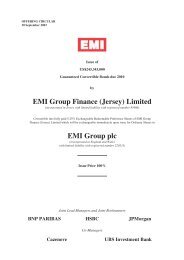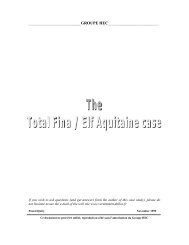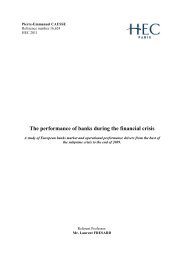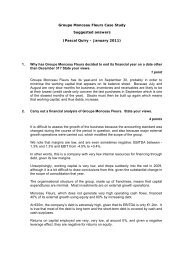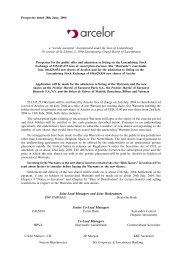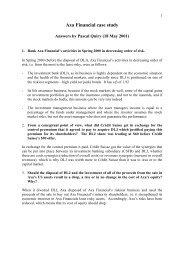Thesis_gd_final_vers.. - Vernimmen
Thesis_gd_final_vers.. - Vernimmen
Thesis_gd_final_vers.. - Vernimmen
Create successful ePaper yourself
Turn your PDF publications into a flip-book with our unique Google optimized e-Paper software.
Beyond a credit boom which benefitted mostly to households and the real estate market,<br />
securitization has triggered a shift from the traditional intermediated banking model in which<br />
banks originate and retain loans on their balance sheet, financing them mostly with equity capital<br />
and deposits, to a disintermediated and fragmented banking model deeply interconnected with<br />
financial markets, in which banks originate or purchase and then sell on and distribute loans,<br />
keeping few of them on balance sheet. Consequently, the high loan portfolio turnover permitted<br />
by securitization allows banks to lend more with the same amount of equity capital because most<br />
loans don’t stay on the balance sheet. Banks tend to become an intermediary between borrowers<br />
and capital markets, generating fees and income through origination, sale and ABS structuring and<br />
underwriting. However, the reality is maybe more complex: studies such as Acharya, Suarez and<br />
Schnabl (2010) on conduits have shown that securitization does not always result in a “true sale”<br />
in so far as the risk associated with the assets are not passed away to outside investors but stay<br />
within the bank. Even though US GAAP does not impose on banks to consolidate conduits<br />
(whereas IFRS does), we can consider that the frontier between on and off-balance sheet may be<br />
in some instances more fictive than real. In a way, securitization can be seen as a non-traditional<br />
source of financing bank’s assets by borrowing money on financial markets; this tends to mitigate<br />
the disintermediation view.<br />
Another subject of interest is the advantages and disadvantages of securitization. At the light of<br />
the recent crisis, the supposed risk-di<strong>vers</strong>ification, increased transparency and stability of the<br />
banking system do not sound convincing. However, when looking carefully at the traditional<br />
banking model, we find that banks use deposits, which are by nature short-term resources which<br />
can be withdrawn at any time and exhibited a strong volatility in the 1970s and 1980s, to finance<br />
loans which are long-term commitments, hence creating an asset liability mismatch as well as a<br />
lack of visibility on resources that could be invested. When considering that households have been<br />
investing a decreasing part of their financial assets on checkable accounts and savings accounts<br />
from the 1970s until now (DeYoung et al. (2004)), securitization may have appeared to be a cheap,<br />
more reliable and longer-term source of funding than deposits. It also allowed banks to indirectly<br />
hold more assets without having to increase their regulatory capital.<br />
Because it establishes a fragmented value chain with numerous intermediaries between the<br />
borrower and the <strong>final</strong> investor, securitization creates non-trivial agency problems and leaves room<br />
for arbitrage opportunities. Concerning agency problems, there is obviously an issue of<br />
asymmetric information between the loan originator and the <strong>final</strong> investor. Credit card<br />
securitization provides an insightful example of that. Outside investors can access to all the<br />
information on the credit history of the credit card holders pooled in the SPV through various<br />
public and private databases. The only piece of information they do not have, but which the<br />
- 20 -



